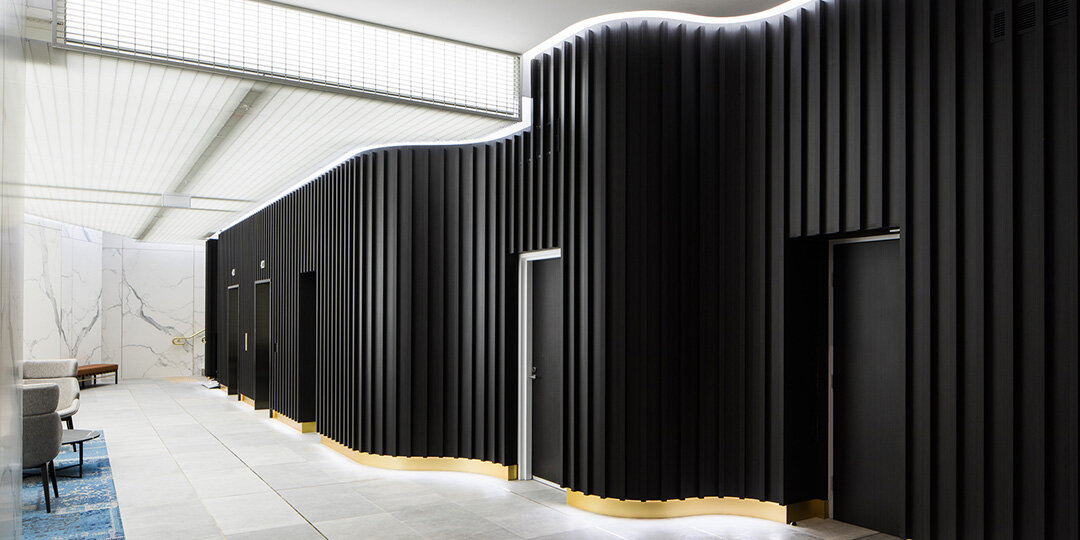Rhythm is all around us. Present in the visual, auditory, tactile and even gustatory aspects of the world, rhythm is one of the most ubiquitous elements in nature. We recognise it as familiar yet intriguing. It’s easy to identify and follow it - but it can keep us wondering as to where exactly it will end up.
When we talk about rhythm from a visual standpoint, we are really talking about patterns. Visual patterns can be found throughout nature - and in abundance. From the predictable tessellation of honeycomb, through the hypnotic perfection of the Fibonacci spiral, to the precise and fractal geometry of snowflakes - in those often mesmerising patterns, things might seem random on the surface. Still, a closer look reveals certain rhythm achieved through repetition, alternation and progression.
Attracted to its satisfying, calming, but equally intriguing qualities, humans have evolved to be drawn to, look for - and create - patterns in the world around them. In architecture and design, rhythm is used to capture attention and create movement by drawing the viewer’s eye across repeated, progressing or flowing elements of the design. Because of that, it can be a powerful tool in creating designs and environments that are eye-catching and draw the viewer in.
Battens are exceptional graphic tools that enable designers to create striking visual outcomes that can add visual rhythm to any built environment. Linear batten cladding can be used to build repetition of long, straight lines - even over tall, multi-storey designs - or curved ones to create the undulating lines of waves.
With the quality of Ever Art Wood® batten cladding matched by its variety when it comes to available lengths, colours and textures, the products have been used to create rhythm in a number of projects around Australia.
Impactful Simplicity Of Uninterrupted Alternation
While simple repetition is the easiest way to create visual rhythm, adding an altered element can create an extra beat that makes the design flow. Ever Art Wood® battens were used to do precisely that at NSWRL Centre of Excellence’s lecture theatre space.
Designers explored the concepts of both repetition and alternation by specifying battens of differing dimensions in the space. By opting for a repeating pattern of two thinner battens followed by a thicker one, the linear rhythm of the spaces is visible from a distance - but continues to evolve as the viewer moves closer to, or further along the wall.
This project utilised Covet’s Kabebari 2 part concealed fix battens to give the battens a floating look. The Kabebari system involves a screw-on backplate which is then covered by the batten itself, eliminating the need for visible screws or cross beams which would interrupt the rhythm of the design.
Similarly, the design employs strip lighting which, due to the easily customisable length of the battens, is embedded seamlessly within the design - allowing the rhythm to continue without missing a beat.
When The Void Gives Space Dimension
When considering rhythm, people tend to focus on the objects or beats that create the pattern itself. However, just as necessary are the spaces and voids that are deliberately left empty.
The contribution of negative space to rhythm can be seen in a retail and office building project in Geelong. In that space, Ever Art Wood® battens were utilised to frame a feature wrap around LED-screen on the upper level of a corner building.
By staggering the lengths of the battens, the designers created eye-catching voids in irregular shapes, taking the form of holes from a distance. Giving the rhythmic arrangement even more visual interest, battens of differing depths were used in randomised sequences to create a staccato effect across the facade.
The crowning detail is the use of the custom metallic blue battens across the awning that frames the vertical lines above. The unexpected pop of blue highlights the subtle difference between two timber-resembling colours of the other vertical pieces - creating additional depth across the more comprehensive design.
Where Geometric And Undulating Rhythms Meet
At Lanzhou Noodle Bar in Chadstone, the designers used linear battens in curved layouts and rolling lengths to explore the meeting point between geometric and undulating rhythms. They sought not only to create a varied yet familiar pattern, but to use the batten cladding to artistic effect in replicating the restaurant’s signature dish - beef noodles.
Koshi Round Hollow Section Battens were the product of choice for this project. It was a crucial decision, as the circular shape of the battens further developed the interplay between straight edges and soft curves. Sticking upright from the ground at the front of the restaurant, the battens take on a freestanding look, having been cut to precise lengths to create a calming, wave-like motif.
Above, the battens hang from the edge of the awning like stalactites in a dual-layered arrangement. Following the curved shape of the facade, they create the predictability of a repetitive, linear pattern with the soothing effect of a rolling wave.
There are myriad ways to evoke rhythm through design. Beyond reliable predictability and soothing repetition, rhythm is about surprising variation, inspirational progression, using voids to define space - and finding order amongst the apparent chaos.
Covet Ever Art Wood® battens are practical but expressive with a host of design options that can be tailored to create various expressions of rhythm. From realistic timber finishes or textures to custom coloured metallics. From the defined edges of traditional battens to cylindrical or trapezoidal forms, in various lengths and depths. When seeking to create rhythm in design, versatility in the material choice is essential - and that’s where Covet’s Ever Art Wood® timber look batten cladding excels.





